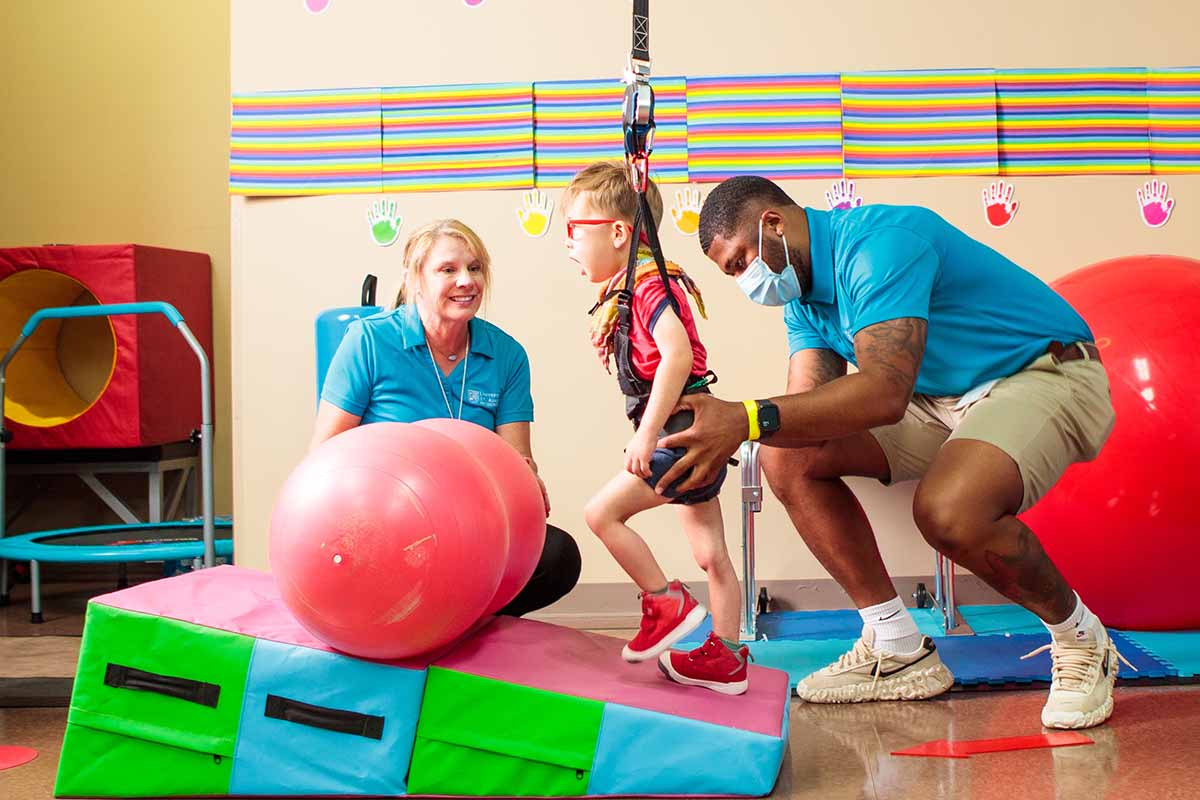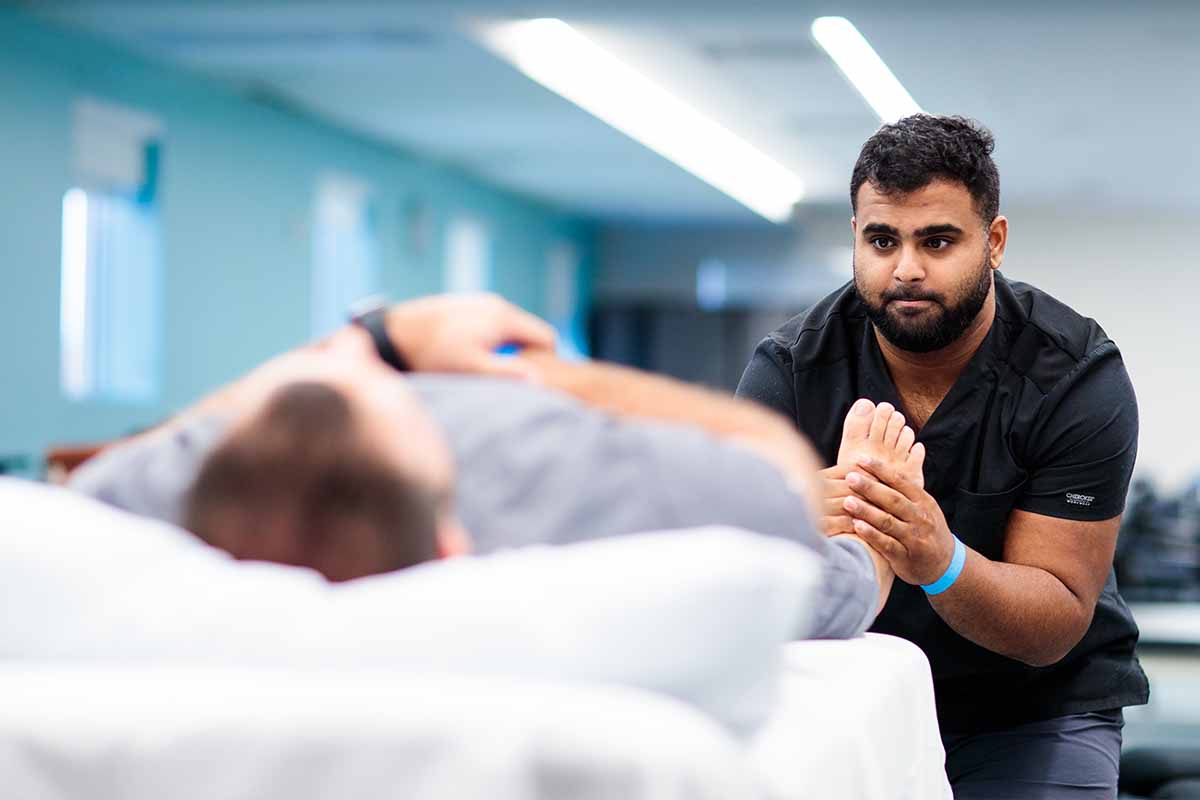
As a physical therapist, you will teach your patients the proper form for their exercises and make sure they are performing each movement correctly. But once they are back in their home environment, how do you know whether they are still doing their exercises the right way—or at all?
You don’t. Unless you are working with one of the new AI devices just introduced to the physical therapy field.
Machines that display “artificial intelligence”—the ability to adapt to changing requirements and learn from experience—are emerging in more and more medical settings today. Patients wear wireless devices that gather data; machines interpret the data and can learn from it to make appropriate choices.
AI-enabled devices can play a valuable role in a physical therapy program, as evidenced by the devices discussed below.
SWORD Health
SWORD Health, a Portuguese startup, makes what it calls a “system for home-based physical rehabilitation (SWORD).” The system uses wireless motion trackers that patients attach to their bodies. A “digital therapist” gives feedback in real time—such as “raise your leg higher.” SWORD includes a web-based platform where remote clinical teams can view analyses of patient data and use this information to monitor and adjust the rehabilitation program. In a recent study that followed two groups of patients recovering from knee injuries, the group following the SWORD regime had Timed Up and Go scores half as long (or twice as good) as the conventional physical therapy group.[1]
Kaia Health
The German startup Kaia Health has created Motion Coach, an app that tracks the motion of points on the body using an iOS or Android device’s front-facing camera. An on-screen wireframe model guides patients through exercises, and a proprietary machine-learning algorithm evaluates patient feedback and adapts the exercise program to the patient’s needs. Patients can use a chat interface to consult with a physical therapist about the exercises.[2] A clinical study conducted at the Technical University of Munich found that Kaia’s app-based approach “reduced user-reported pain levels significantly.”[3]
Physitrack
PhysiApp, created by the international company Physitrack, is an app for iPads and iPhones that tracks patient exercise performance, adherence, and outcomes. It also features anatomical imagery with 3D content provided by Primal Pictures. According to the Physitrack website, the app is used by nearly 1 million patients per year in more than 100 countries around the world.
Robotics
AI-enabled robotics are also gaining traction in the PT field. Bionik Labs creates mechanical rehabilitation devices that work with hands, wrists, and arms, guiding the patient to perform the exact movement in the correct way and providing assistance as needed.
Robotic therapy systems process a massive amount of data, getting “smarter” as they learn the patient’s capabilities. A therapy robot can sense even the tiniest bit of progress and provide quantified information about incremental improvements. As the patient gains strength and ability, the robot provides less assistance, encouraging the patient to move with more confidence.
These mechanical physical therapists can work collaboratively with humans: The robots help the patient fine-tune each movement, while the therapists help the patient translate these improvements into greater function.[4]
Other applications
Recent studies show that machine learning models can learn to classify X-ray and MRI images with accuracy equal to or greater than human experts. They can also learn to classify patients into pain phenotypes based on brain MRI (with variable accuracy), and by level of risk of knee injury (still in development).[5]
Deep learning frameworks
Researchers at the University of Idaho are working on creating deep learning–based frameworks for the automated assessment of PT patient performance. They trained three architecturally distinct neural networks—a convolutional neural network, a recurrent neural network, and a holistically nested network composed of subnetworks—to automatically generate movement quality scores for data received. “To the best of our knowledge, [ours is the] first work that implements deep neural networks for the assessment of rehabilitation performance,” they wrote. [6] Deep learning is a subset of machine learning.
Implications for practice—and education
It’s still early days, but if this trend toward artificial intelligence in physical therapy continues to grow and become accessible to more patients, it has the potential to eventually change the role of the physical therapist. Michael Rowe, editor of OpenPhysio Journal, writes: “Clinicians in the near future will find themselves working with information networks on a scale well beyond the capacity of human beings to grasp, thereby necessitating the use of artificial intelligence to analyse and interpret the complex interactions of data, patients and the newly-constituted care teams that will emerge.”
Rowe speculates that the patients of the future may gather health-related data themselves and work directly with data scientists who will help them analyze and interpret the information. As the more technical aspects of physical therapy are outsourced to machines, the profession of physical therapy will become more focused on the human element that only humans can provide.
This, in turn, will require changes to the way physical therapy is taught in universities. Rowe writes, “We need to ask how to adapt physiotherapy education so as to deepen and strengthen the human-based components that are difficult for AI-based systems to replicate, as well as to integrate the technological and data literacies that are needed in order to understand and work with smart machines.”[7]
Technology at USAHS
At USAHS, although we don’t currently have AI devices incorporated into our curriculum, we do stay ahead of the curve by outfitting our labs with advanced technology. Students in our Doctor of Physical Therapy (DPT) program have the chance to practice using state-of-the-art clinical equipment and tools. Each of our five campuses has a Double Robotics telepresence robot, which enables remote healthcare providers to interact with patients through a movable robot and a screen. Our labs also boast anatomage tables for virtually visualizing the human body, 3D printers for creating adaptive tools, diagnostic equipment for speech disorders, and more.
The largest PT school in the United States,* the University of St. Augustine for Health Sciences (USAHS) offers a hands-on Doctor of Physical Therapy (DPT) degree. Practice with mock and real patients in our state-of-the-art simulation centers and learn anatomy with our high-tech tools. Prepare for clinical practice with a wide range of patients, as well as advanced roles in research, practice leadership, and policymaking. Residential and Flex (online/weekend) paths are available.
*Based on total DPT degrees conferred, as reported by the Integrated Postsecondary Education Data System (IPEDS). Data is captured by IPEDS through interrelated surveys conducted annually by the U.S. Department of Education’s National Center for Education Statistics (NCES). https://nces.ed.gov/ipeds/
[1] F.D. Correia et al., “Home-based Rehabilitation with a Novel Digital Biofeedback System versus Conventional In-person Rehabilitation after Total Knee Replacement: a feasibility study,” Nature: Scientific Reports, July 26, 2018.
[2] Kyle Wiggers, “Kaia Health’s app uses AI to alleviate back pain,” VentureBeat, September 20, 2018.
[3] Stephan Huber et al., “Treatment of Low Back Pain with a Digital Multidisciplinary Pain Treatment App: Short-Term Results, JMIR Rehabil Assist Technol. 2017 Jul–Dec; 4(2): e11.
[4] Michal Prywata, “Bots Are Becoming Highly Skilled Assistants in Physical Therapy,” VentureBeat, October 15, 2017.
[5] Christopher Tack, “Artificial intelligence and machine learning: applications in musculoskeletal physiotherapy,” Musculoskeletal Science and Practice 39 (2019) 164–169.
[6] Kyle Wiggers, “Physical Therapy Has a New Ally: AI,” VentureBeat, January 30, 2019.
[7] Michael Rowe, “Artificial intelligence in clinical practice: Implications for physiotherapy education,” OpenPhysio Journal, May 28, 2018.










